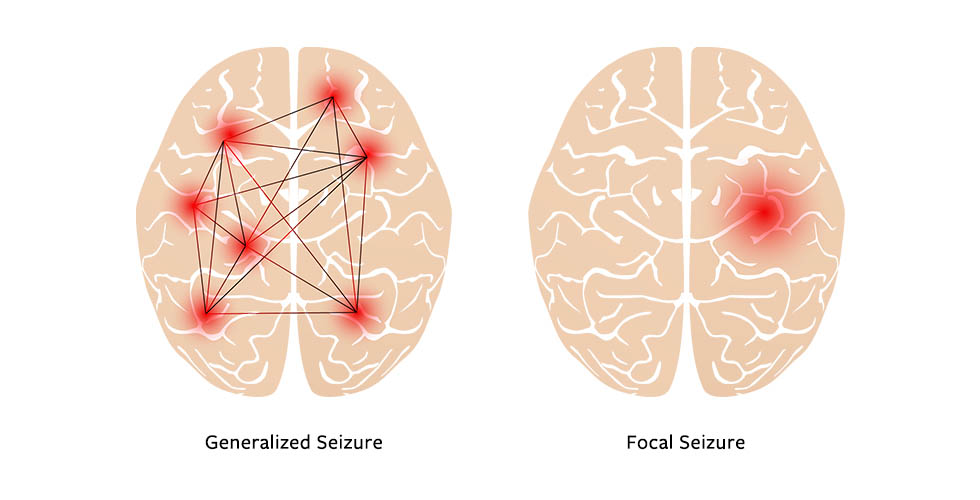Health Topics
Skip to main content

Epilepsy

Understanding different kinds of seizures
More than 30 types have been reported
How do you know if someone is having a seizure? It's not always obvious, and symptoms can vary widely. For example, some seizures cause a person to fall and shake, while others cause them to stare off and look confused.
There are two categories of seizures, based on where they start in the brain. Under those categories, there are many types. According to the National Institute of Neurological Disorders and Stroke (NINDS), doctors have discovered more than 30 different types of seizures. Here's a rundown of a few.
Generalized seizures affect both sides of the brain at the same time. Some types include:
- Tonic-clonic seizures may cause a person to lose consciousness, this may cause them to fall to the ground, have muscle jerks or spasms, and cry out. They are also called grand mal seizures.
- Absence seizures cause rapid blinking or staring into space for a few seconds. They are also called petit mal seizures.
Focal seizures, also called partial seizures, happen in just one area of the brain. Some types include:
- Simple focal seizures affect a small part of the brain. They may cause twitching or a change in sensation, such as a strange taste or smell.
- Complex focal seizures may make an individual feel confused or dazed. Someone with a complex focal seizure won't be able to respond to questions or directions for up to a few minutes.
- Secondary generalized seizures begin in one part of the brain, then spread to both sides of the brain. This causes a focal seizure first, followed by a generalized seizure.
- Unknown onset seizures may later be diagnosed as focal or generalized seizures. A seizure is initially termed unknown onset if no one else witnesses it. For example, if it happens at night or to someone who lives alone.
To learn more, visit the NINDS website.







